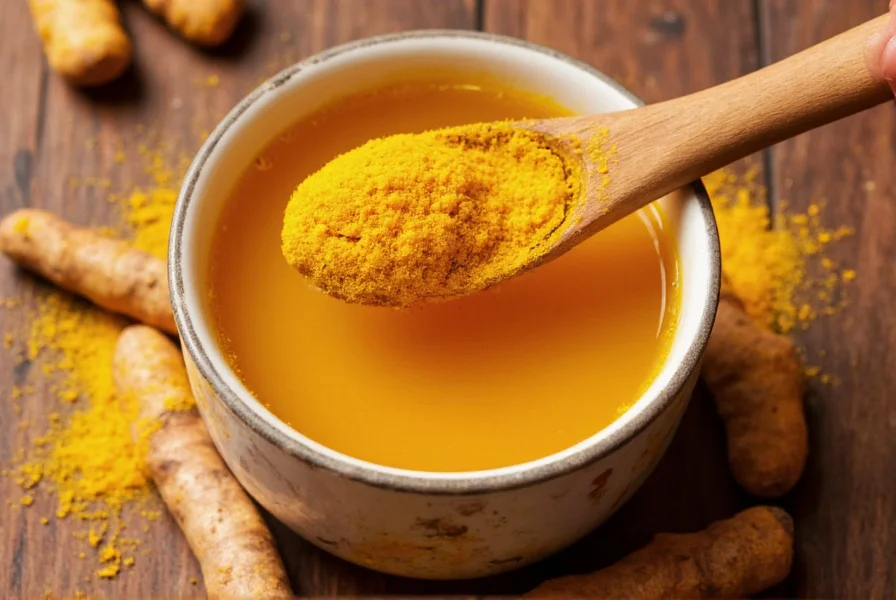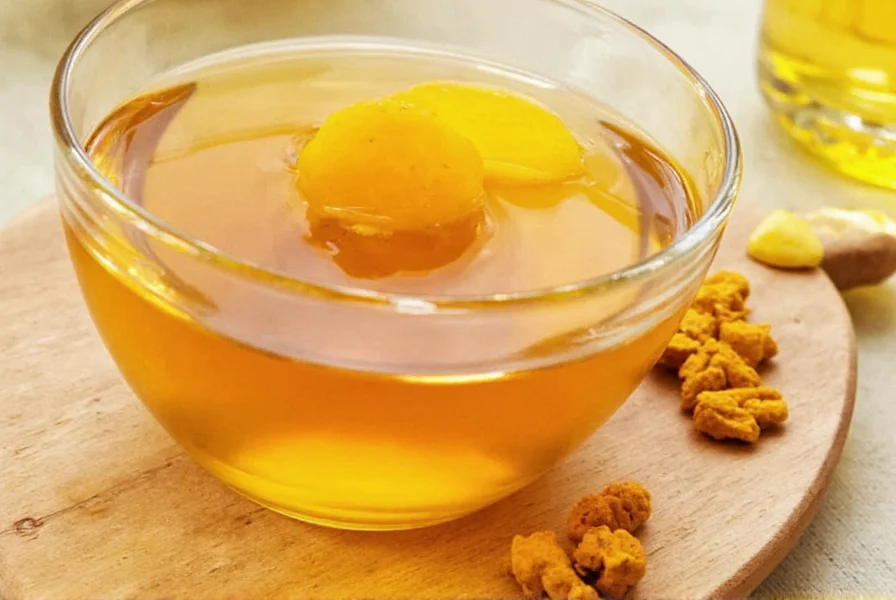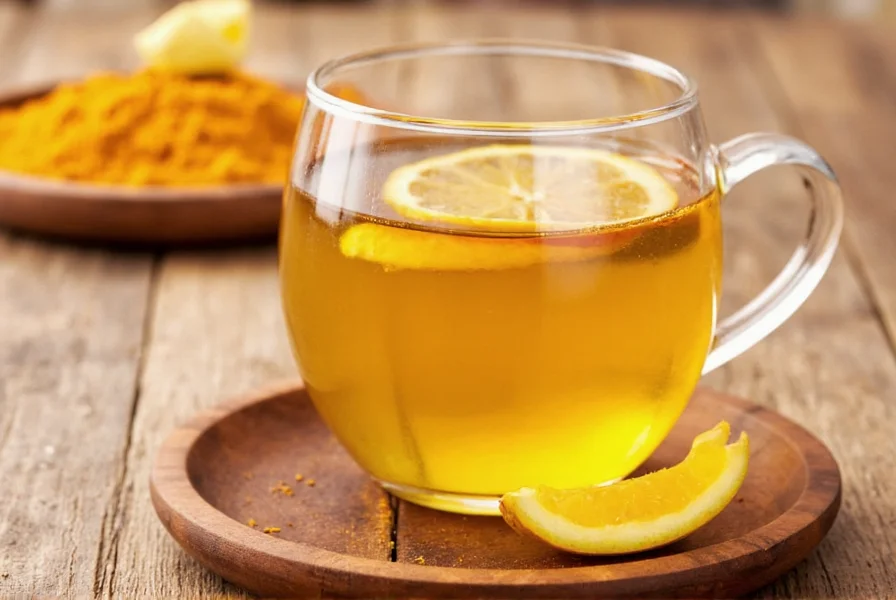Creating the perfect cup of turmeric tea requires understanding both the ingredients and preparation technique. This golden beverage has gained global popularity not just for its vibrant color but for its unique flavor profile that combines earthy, spicy, and slightly bitter notes. Whether you're new to herbal infusions or looking to refine your technique, this comprehensive guide provides everything you need for consistently excellent results.
Why Turmeric Tea Deserves a Place in Your Routine
Turmeric tea has been enjoyed for centuries across various cultures, particularly in South Asia where turmeric grows abundantly. People appreciate this beverage for its complex flavor that balances warmth from ginger, earthiness from turmeric, and brightness from citrus additions. The traditional preparation method maximizes both flavor extraction and the solubility of curcumin, turmeric's active compound, through proper heat application and the inclusion of black pepper.
Essential Ingredients for Authentic Turmeric Tea
The quality of your ingredients directly impacts the final beverage. Here's what you'll need for a single serving of premium turmeric tea:
| Ingredient | Amount | Preparation Notes |
|---|---|---|
| Fresh turmeric root OR ground turmeric | 1-inch piece (fresh) OR 1 tsp (ground) | Fresh provides brighter flavor; ground offers convenience |
| Fresh ginger root | 1/2-inch piece, thinly sliced | Peel only if skin appears tough or dirty |
| Black peppercorns | 5-6 whole OR 1/8 tsp freshly ground | Essential for curcumin absorption |
| Water | 1 cup (8 oz) | Filtered preferred for cleaner taste |
| Lemon | 2-3 slices OR 1 tbsp juice | Add after steeping to preserve vitamin C |
| Honey or maple syrup | To taste (1-2 tsp) | Add after cooling slightly to preserve nutrients |
Step-by-Step Brewing Process
Follow these precise steps for the best homemade turmeric tea experience. This easy turmeric tea recipe for beginners yields consistent results every time:
- Prepare ingredients: Peel and thinly slice fresh turmeric and ginger (if using fresh). Measure ground spices if using dried.
- Simmer base: Combine water, turmeric, ginger, and black pepper in a small saucepan. Bring to a gentle boil over medium heat.
- Steep properly: Reduce heat to low, cover, and simmer for 10-15 minutes. Do not boil vigorously as this degrades flavor compounds.
- Strain carefully: Pour through a fine mesh strainer into your cup, pressing gently on solids to extract maximum liquid.
- Finish perfectly: Add lemon and sweetener after the tea has cooled slightly (below 140°F/60°C) to preserve beneficial compounds.
Advanced Techniques for Superior Results
Master the art of turmeric tea preparation with these professional tips that transform a basic recipe into an exceptional beverage. Many people making turmeric tea for the first time don't realize how small adjustments significantly impact flavor and potential benefits.
Temperature control matters: Maintain a gentle simmer (185-200°F/85-93°C) rather than a rolling boil. Higher temperatures can create bitter compounds in turmeric. Use a kitchen thermometer for precision when perfecting your homemade turmeric ginger tea instructions.
Fat enhances absorption: While traditional recipes are dairy-free, adding 1/4 teaspoon of coconut oil or MCT oil during steeping significantly improves curcumin bioavailability. This technique follows the authentic turmeric tea brewing technique used in Ayurvedic practices.
Freshness testing: Rub a small piece of fresh turmeric between your fingers. If it leaves a vibrant yellow stain that doesn't immediately wash off, it's fresh and potent. Stale turmeric loses both color and flavor intensity.
Popular Variations to Customize Your Brew
Once you've mastered the basic healthy turmeric tea preparation method, experiment with these culturally inspired variations:
- Golden Milk Tea: Add 1/4 cup coconut milk after straining for a creamy version (simmer gently without boiling)
- Citrus Boost: Include orange or tangerine peel during steeping for brighter flavor notes
- Spiced Version: Add 1/4 teaspoon cinnamon, 2 cardamom pods, or a small piece of clove
- Cold Brew Method: For a smoother, less bitter tea, steep ingredients in cold water for 12 hours

Avoiding Common Preparation Mistakes
Even experienced tea makers sometimes make these errors when preparing turmeric tea. Learning these pitfalls helps perfect your simple turmeric tea recipe without dairy:
- Over-boiling: Extended vigorous boiling creates bitterness. Simmer gently for optimal flavor extraction.
- Incorrect spice ratios: Too much turmeric overwhelms other flavors. Stick to 1 teaspoon ground per cup as a starting point.
- Adding lemon too early: High heat degrades vitamin C. Always add citrus after removing from heat.
- Skipping black pepper: Piperine in black pepper increases curcumin absorption by up to 2000%. Never omit this crucial ingredient.
- Using old spices: Ground turmeric loses potency within 6 months. Check freshness before brewing.
Serving and Storage Recommendations
Enjoy your turmeric tea immediately for the best flavor experience. The vibrant color begins fading within 30 minutes as oxidation occurs. For optimal enjoyment:
- Serve in clear glass or white ceramic cups to appreciate the beautiful golden hue
- Consume within 20 minutes of preparation for peak flavor and potential benefits
- If storing, keep in an airtight glass container in the refrigerator for up to 48 hours
- Reheat gently without boiling if necessary - microwave in 15-second intervals
- Shake or stir well before drinking as settling occurs during storage

Frequently Asked Questions
How often should I drink turmeric tea for best results?
Most people enjoy turmeric tea once daily as part of their routine. When following a traditional turmeric tea recipe with black pepper, limit consumption to 1-2 cups per day to avoid potential digestive discomfort from excessive turmeric intake.
Can I make turmeric tea with only ground spices?
Yes, you can create an excellent simple turmeric tea recipe without dairy using just ground turmeric (1 tsp), ground ginger (1/4 tsp), and black pepper (1/8 tsp) per cup of water. While fresh ingredients provide brighter flavor, ground spices offer convenience and consistent results for your everyday turmeric tea preparation.
Why does my turmeric tea taste bitter?
Bitterness usually comes from over-boiling or using too much turmeric. Follow proper homemade turmeric ginger tea instructions: simmer gently for 10-15 minutes (don't boil vigorously) and use no more than 1 teaspoon of ground turmeric per cup. Adding a small amount of fat like coconut oil during steeping can also reduce perceived bitterness.
Does turmeric tea stain cups and clothing?
Yes, turmeric's vibrant color can stain light-colored ceramics and fabrics. To prevent stains, rinse cups immediately after use with warm soapy water. For existing stains, create a paste of baking soda and water, apply to the stain, let sit for 15 minutes, then scrub gently. When enjoying your healthy turmeric tea preparation, consider using darker colored cups.
Can I prepare turmeric tea in advance for the week?
While fresh is best, you can prepare a larger batch of this easy turmeric tea recipe for beginners and store it in the refrigerator for up to 48 hours. For weekly preparation, make a concentrated version (double the spices) and dilute with hot water when serving. This approach maintains flavor quality better than storing fully prepared tea for extended periods.











 浙公网安备
33010002000092号
浙公网安备
33010002000092号 浙B2-20120091-4
浙B2-20120091-4